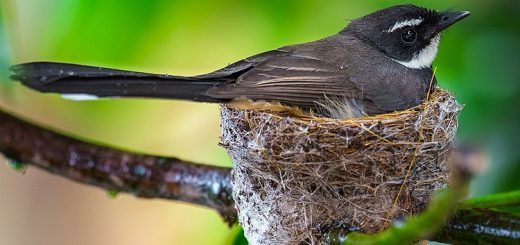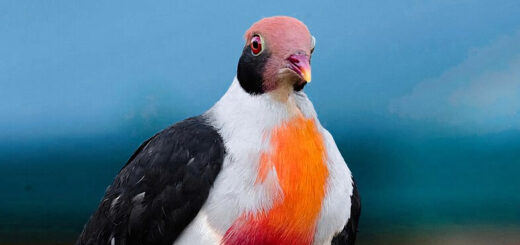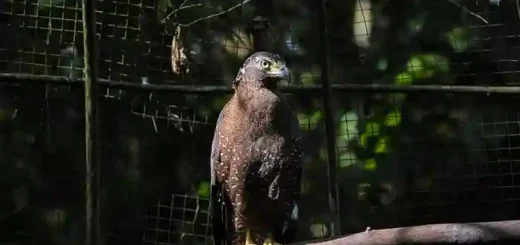Philippine Eagle Owl – Night Hunter of the Forests
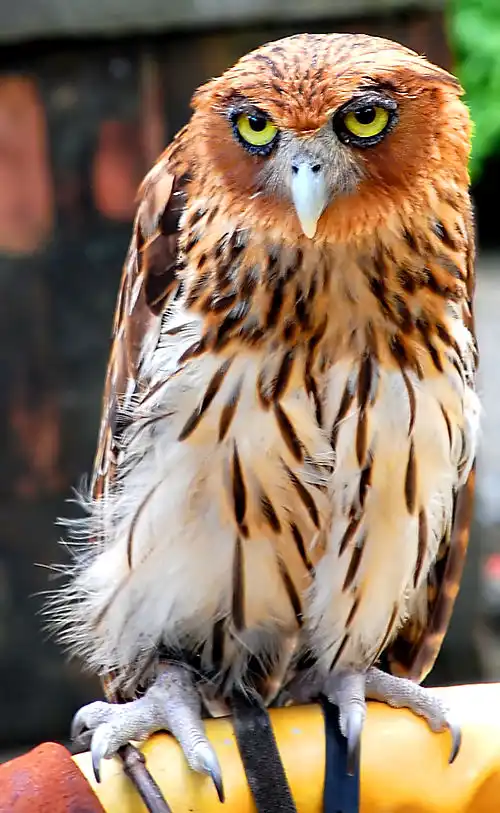
Deep within the dense forests of the Philippines, as the sun dips below the horizon and shadows stretch across the land, a pair of glowing amber eyes silently watches from above. This mysterious nocturnal sentinel is the Philippine Eagle Owl (Bubo philippensis), the largest owl species in the Philippines and one of the most elusive raptors in Southeast Asia.
A Glimpse of Majesty
With a wingspan reaching up to 48 inches (122 cm) and standing at 15 to 20 inches tall, the Philippine Eagle Owl is a commanding presence in the forest canopy. Its rich brown plumage, heavily streaked breast, and piercing yellow-orange eyes give it a regal yet intimidating appearance—perfectly suited for a top predator that rules the night.
Like many owl species, the Philippine Eagle Owl has ear tufts, which aren’t ears at all but feathers that may aid in camouflage or communication. Its real ears are asymmetrically placed to help pinpoint the faintest sounds made by prey in the undergrowth.
Habitat and Range
Endemic to the Philippines, this powerful owl is found primarily on the islands of Luzon, Samar, Leyte, and Mindanao. It prefers lowland primary and secondary forests, often near rivers or swamps where prey is abundant. Unfortunately, this preference for lowland areas makes it especially vulnerable to habitat destruction, as these regions are frequently cleared for agriculture or development.
Diet and Hunting Behavior
A true nocturnal predator, the Philippine Eagle Owl hunts under the cover of darkness. It feeds on a variety of prey including rodents, small mammals, birds, reptiles, and amphibians. Equipped with exceptional hearing and silent flight, it can swoop down on unsuspecting animals with terrifying precision.
In the wild, it plays a critical role in maintaining a balanced ecosystem by controlling populations of pests like rats and other small animals.
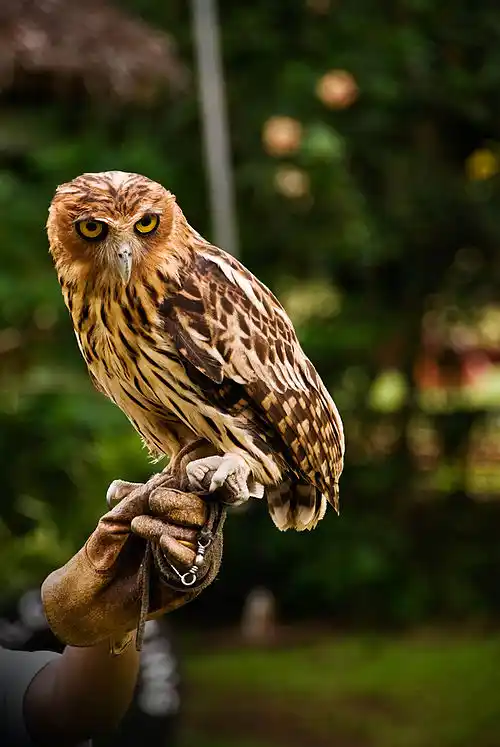
A Philippine Eagle-Owl at Malagos Garden Resort, Davao City, Philippines. – Creative Commons | Author: Raymund James Bare – Source: https://commons.wikimedia.org/wiki/File:Bubo_philippensis_-Malagos_Garden_Resort,_Davao_City,_Philippines-8a.jpg
Breeding and Behavior
Not much is known about the breeding habits of this elusive species, but like most owls, it is believed to be monogamous, forming long-term pair bonds. Nests are often located in tree cavities or large branches, where the female typically lays 1–2 eggs.
Chicks are dependent on their parents for several weeks, during which both adults are fiercely protective. These young owlets grow quickly and must soon learn to master the skies, just as their parents did.
Threats and Conservation
The Philippine Eagle Owl is currently classified as Vulnerable by the International Union for Conservation of Nature (IUCN), with an estimated population of only a few hundred pairs in the wild.
Major threats include:
- Deforestation for logging and agriculture
- Habitat fragmentation
- Capture for the illegal pet trade
- Human disturbance
Organizations like the Philippine Eagle Foundation and Haribon Foundation have included the owl in their broader conservation efforts, recognizing that saving apex predators like this owl has ripple effects for entire ecosystems.
A Call to Protect the Forest’s Guardian
The Philippine Eagle Owl is more than just a bird—it’s a symbol of the wild, untamed beauty of the Philippine forests. Its haunting call, echoing through the night, is a reminder that even in our modern world, nature still holds secrets worth protecting.
Preserving the owl’s habitat, enforcing anti-wildlife trafficking laws, and supporting local conservation efforts are crucial steps in ensuring that this majestic raptor continues to soar through the forests of the Philippines for generations to come.
Did you enjoy learning about the Philippine Eagle Owl? Share your thoughts or experiences below—and if you’re lucky enough to hear its call in the wild, count yourself among a rare few.
References:
https://en.wikipedia.org/wiki/Philippine_eagle-owl

